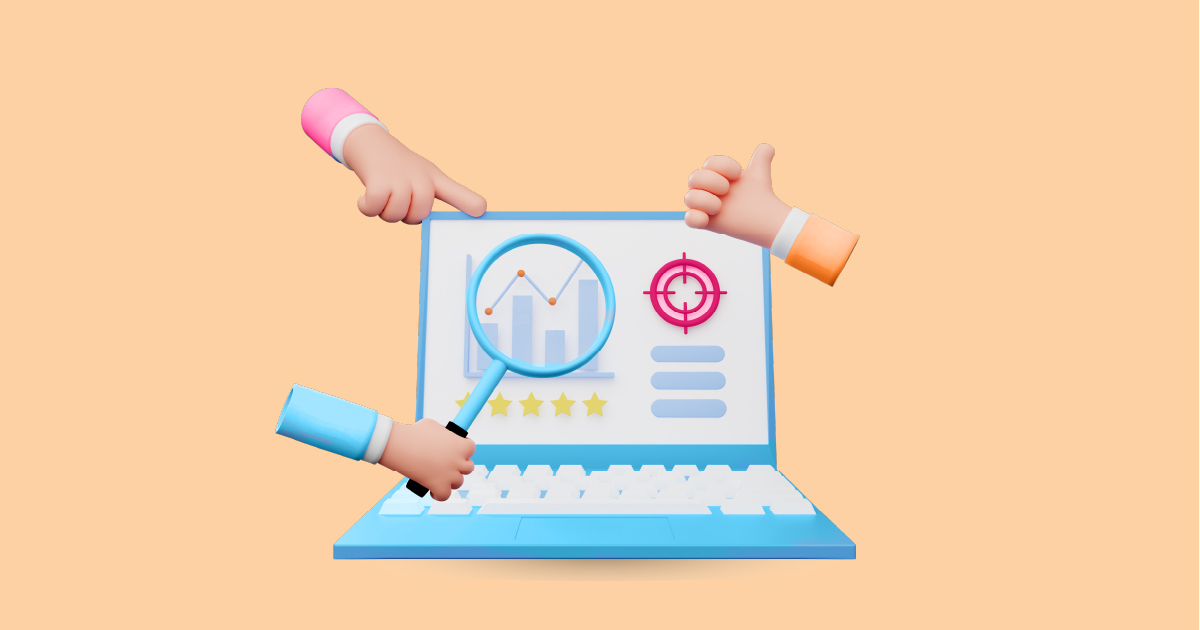In today’s digital age, staying informed about what’s being said online is crucial for businesses, organizations, and individuals alike. Online media monitoring, also known as social media listening or web monitoring, is the practice of tracking various online channels to gather insights and assess the public perception of brands, products, or topics. This article delves into the significance of online media monitoring, its benefits, tools and technologies, key metrics, applications across industries, best practices, challenges, and future trends.
Introduction to Online Media Monitoring

1. Definition and Importance
Online media monitoring involves tracking and analyzing online conversations across various platforms such as social media, news websites, blogs, forums, and review sites. It provides valuable insights into consumer sentiment, emerging trends, competitor activities, and potential crises. In today’s hyper-connected world, where information spreads rapidly, monitoring online media has become indispensable for maintaining a favorable brand reputation and making informed decisions.
2. Evolution of Media Monitoring
Traditionally, media monitoring primarily focused on print, broadcast, and radio outlets. However, with the proliferation of digital channels, the landscape has evolved significantly. Today, online media monitoring encompasses a diverse range of sources, including social media platforms like Facebook, Twitter, Instagram, LinkedIn, and YouTube, as well as online news portals, blogs, and discussion forums.
Benefits of Online Media Monitoring
1. Real-time Insights
One of the primary advantages of online media monitoring is the ability to access real-time data and insights. Brands can track mentions, reactions, and trends as they happen, enabling them to respond promptly to customer inquiries, address issues, and capitalize on opportunities.
2. Competitive Analysis
By monitoring competitors’ online activities and sentiment, businesses can gain valuable competitive intelligence. They can identify market gaps, benchmark their performance against rivals, and refine their strategies to stay ahead in the market.
3. Crisis Management
Online media monitoring plays a critical role in crisis management. By monitoring conversations and detecting potential issues early on, organizations can proactively address concerns, mitigate reputational damage, and regain the trust of stakeholders.
Online Media Monitoring Tools and Technologies
1. Social Media Monitoring Platforms
Numerous social media monitoring platforms, such as Hootsuite, Sprout Social, and AIM Insights, offer comprehensive features for tracking brand mentions, analyzing sentiment, and monitoring key metrics. These tools enable businesses to monitor multiple social media channels from a single dashboard, facilitating efficient management and analysis.
2. Web Scraping Tools
Web scraping tools like Scrapy and BeautifulSoup are instrumental in gathering data from websites and online forums. They automate the process of extracting relevant information, such as customer reviews, blog posts, and news articles, providing valuable insights for analysis.
3. Sentiment Analysis Software
Sentiment analysis software, powered by artificial intelligence and natural language processing algorithms, helps businesses gauge public sentiment towards their brand, products, or services. These tools classify text data into positive, negative, or neutral categories, allowing organizations to understand how their audience perceives them.
Key Metrics and KPIs
1. Reach and Impressions
Reach and impressions measure the size and scope of online conversations. By tracking the number of people exposed to a brand’s content or messaging, businesses can assess their online visibility and audience engagement.
2. Sentiment Analysis
Sentiment analysis evaluates the emotional tone of online mentions, categorizing them as positive, negative, or neutral. This metric provides valuable insights into customer sentiment, enabling businesses to gauge satisfaction levels and identify areas for improvement.
3. Share of Voice
Share of voice quantifies a brand’s presence in online conversations relative to its competitors. By analyzing the volume and frequency of brand mentions within a specific industry or market segment, organizations can assess their market share and competitive position.
Applications Across Industries
1. Marketing and PR
In the realm of marketing and public relations, online media monitoring helps businesses track campaign performance, measure brand awareness, and identify influencers for collaboration. It enables marketers to tailor their messaging, optimize ad targeting, and engage with their audience effectively.
2. Reputation Management
Maintaining a positive brand reputation is paramount in today’s digital landscape. Online media monitoring allows organizations to monitor online sentiment, address negative feedback, and manage crises proactively. By identifying reputation risks early on, businesses can safeguard their brand image and maintain customer trust.
3. Market Research
Online media monitoring serves as a valuable tool for market research and consumer insights. By analyzing online conversations, trends, and customer feedback, businesses can gain a deeper understanding of market dynamics, consumer preferences, and emerging opportunities. This information empowers organizations to make data-driven decisions and stay ahead of the competition.
Best Practices for Effective Online Media Monitoring
1. Define Objectives
Before embarking on online media monitoring, it’s essential to define clear objectives and goals. Whether it’s enhancing brand awareness, monitoring competitor activities, or managing crises, establishing specific metrics and KPIs ensures that monitoring efforts align with business objectives.
2. Choose Relevant Sources
Identifying relevant sources for monitoring is crucial for obtaining accurate and actionable insights. Depending on the industry and target audience, businesses should select appropriate channels, platforms, and websites to track conversations effectively.
3. Automate Processes
Given the vast volume of online data, automation is essential for efficient monitoring and analysis. Leveraging automation tools and technologies streamline data collection, analysis, and reporting, enabling businesses to focus on interpreting insights and driving strategic decisions.
Case Studies
Success Stories from Various Industries
- Retail: A leading retailer leveraged media monitoring to track customer feedback, identify product issues, and improve customer satisfaction levels.
- Hospitality: A hotel chain uses sentiment analysis to gauge guest sentiment and tailor their service offerings to meet customer expectations.
- Technology: A software company monitored online conversations to identify emerging trends, inform product development, and enhance market positioning.
Challenges and Limitations
1. Data Overload
The abundance of online data poses a challenge for businesses in terms of data overload. Filtering through vast volumes of information to extract meaningful insights can be time-consuming and resource-intensive.
2. Accuracy and Reliability
Despite advancements in technology, media monitoring tools may not always provide accurate or reliable insights. Factors such as ambiguous language, sarcasm, and cultural nuances can complicate sentiment analysis and interpretation.
3. Privacy Concerns
As organizations collect and analyze vast amounts of online data, privacy concerns have become increasingly prevalent. It’s essential for businesses to adhere to data protection regulations and ethical guidelines to safeguard consumer privacy and trust.
Future Trends
1. AI and Machine Learning Advancements
Advancements in artificial intelligence and machine learning are poised to revolutionize online media monitoring. AI-powered algorithms can analyze vast amounts of unstructured data, identify patterns, and generate actionable insights with unprecedented accuracy and speed.
2. Integration with Other Tools
The integration of online media monitoring tools with other business intelligence and analytics platforms is expected to enhance synergy and efficiency. By combining data from multiple sources, organizations can gain a holistic view of their online presence and make more informed decisions.
3. Predictive Analytics
The adoption of predictive analytics techniques enables businesses to anticipate future trends, identify potential issues, and proactively address them. By leveraging historical data and machine learning algorithms, organizations can forecast market trends, consumer behavior, and reputational risks with greater accuracy.
Conclusion
In conclusion, online media monitoring plays a pivotal role in today’s digital landscape, providing businesses with valuable insights and intelligence to inform strategic decision-making. From real-time insights and competitive analysis to reputation management and market research, the benefits of online media monitoring are undeniable. By leveraging advanced tools, adopting best practices, and staying abreast of emerging trends, organizations can harness the power of online media monitoring to drive growth, mitigate risks, and maintain a competitive edge in the market.
Ready to take your online media monitoring to the next level? Request a demo from AIM Technologies today and discover how our cutting-edge solutions can empower your business. Stay ahead of the curve and unlock new opportunities with AIM Technologies.
FAQs
What are the main sources monitored in media monitoring?
- Media monitoring typically includes social media platforms, news websites, blogs, forums, and review sites.
How can businesses overcome data overload in media monitoring?
- To overcome data overload, businesses can leverage automation tools, establish clear objectives, and focus on monitoring relevant sources.
What role does sentiment analysis play in media monitoring?
- Sentiment analysis helps businesses gauge public sentiment towards their brand, products, or services, enabling them to understand customer perceptions and sentiments.
How can online media monitoring benefit small businesses?
- Media monitoring allows small businesses to track brand mentions, monitor competitor activities, and gain valuable market insights without the need for significant resources or investment.
What are the ethical considerations associated with online media monitoring?
- Ethical considerations in online media monitoring include respecting user privacy, adhering to data protection regulations, and ensuring transparency in data collection and analysis.




